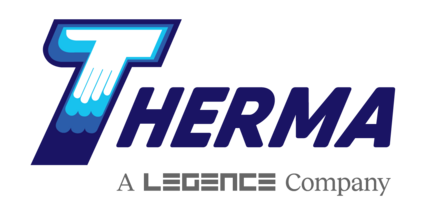by Patti Dees
Commercial water management minimizes waste and saves money. Facilities that strive to meet sustainability goals benefit from reduced business risk while promoting water security for themselves and their neighbors. Water management begins with a few simple steps and provides long-lasting benefits.
What is Water Management?
Water management is simply a collection of waste reduction practices focused on water. Commercial water management can target cost reduction, equipment efficiency, or business sustainability.
Depending on the type of commercial building, waste reduction can mean different things. A shopping center, a medical complex, and a data center each use water. However the differences in how it is used and the quantities of it means each approach should be tailored to a facility’s particular needs.
For instance, the bulk of water use is very different for shopping centers and data centers. Shopping centers need to accommodate public restrooms and are likely to focus on improving plumbing systems. While data centers have restrooms, their water use is driven by the extensive cooling that is required for servers. Data centers would see more benefits by focusing on efficiency and waste in cooling systems than on installing automated fixtures in restrooms.
Why Bother with Water Management in Commercial Buildings?
Water management lowers costs and improves businesses and communities. Controlling waste lowers operating costs through increased equipment efficiency and better insurance rates. Taking positive actions to limit a commercial facility’s impact on water supplies and pursuing green certifications builds a better reputation within nearby communities and ensures continued access to clean water for businesses and residents alike.
Save Money
Commercial water management helps businesses save money in several ways. The first step in developing a water maintenance plan is to assess where and how much water is being used. This information is then used to identify waste within plumbing or HVAC systems. Leaks are the simplest form of waste to address. Repairs not only eliminate wasted water but cut down on potential property damage while increasing equipment efficiency. Continued monitoring for leak detection and maintaining equipment efficiency both reduce risk to property, which can lower insurance rates.
With basic repairs taken care of, water management shifts to finding ways to not just waste less water, but to use less overall. This requires a shift from the early reactive stages of water management to long-term commitments and investments such as updating outdated equipment or establishing water monitoring procedures as part of regular building maintenance and operation.
Reduce Risk and Improve Reputation
Water scarcity is a growing concern for many areas and industries. But commercial buildings and the businesses they house can also be impacted by water shortages. While water security directly impacts businesses in the food and medical industries, even office buildings require access to water to remain open. By taking steps now, facilities are protecting future access to utilities needed for businesses to succeed.
Aside from the financial benefits of reducing risks to property and securing access to water, there are social benefits. Businesses that support sustainability build a reputation as “good neighbors”. Often, a good reputation translates to positive brand recognition and can expand or secure a business’s customer base.

Water-saving Technology and Tips
Forming a water management plan includes changes to equipment, fixtures, or behaviors. Commercial water management can include the introduction of water-saving technologies in the form of sensors and automation, and following conservation best practices such as continued metering and repurposing used water. Examples include:
- Fixture manufacturers produce a wide array of options for water-savvy restrooms and kitchens. Key features to consider are automation and water-saving designs that maintain a sanitary space using less water.
- HVAC systems that rely on water for cooling or heating should be updated, if possible, especially if the equipment relies on a single-pass design. Multi-pass designs reuse water and boost efficiency. If replacing an HVAC system is too large an investment at the moment, look for ways to repurpose condensate or effluent.
- Irrigation is the most common outdoor use of water for commercial buildings. Consider installing soil-moisture sensors, automated controls, or native or drought-resistant landscaping options. Explore reusing rainwater or greywater.
Water management in commercial buildings allows businesses and owners to reduce waste and save money. Therma offers sustainable solutions for commercial water management through design, installation, and maintenance services. Contact them to discuss your facility’s needs and how water conservation can work for you.
Patti draws on her background as a chemical engineer to share information with readers on technology, manufacturing, and construction.
Sources
Climate Champions – Addressing water risks to build business resilience – Climate Champions
Consulting – Specifying Engineer – Water management in commercial buildings—thinking differently | Consulting – Specifying Engineer
US Environmental Protection Agency – Water Management Plans and Best Practices at EPA
US Environmental Protection Agency – Best Management Practices | US EPA








